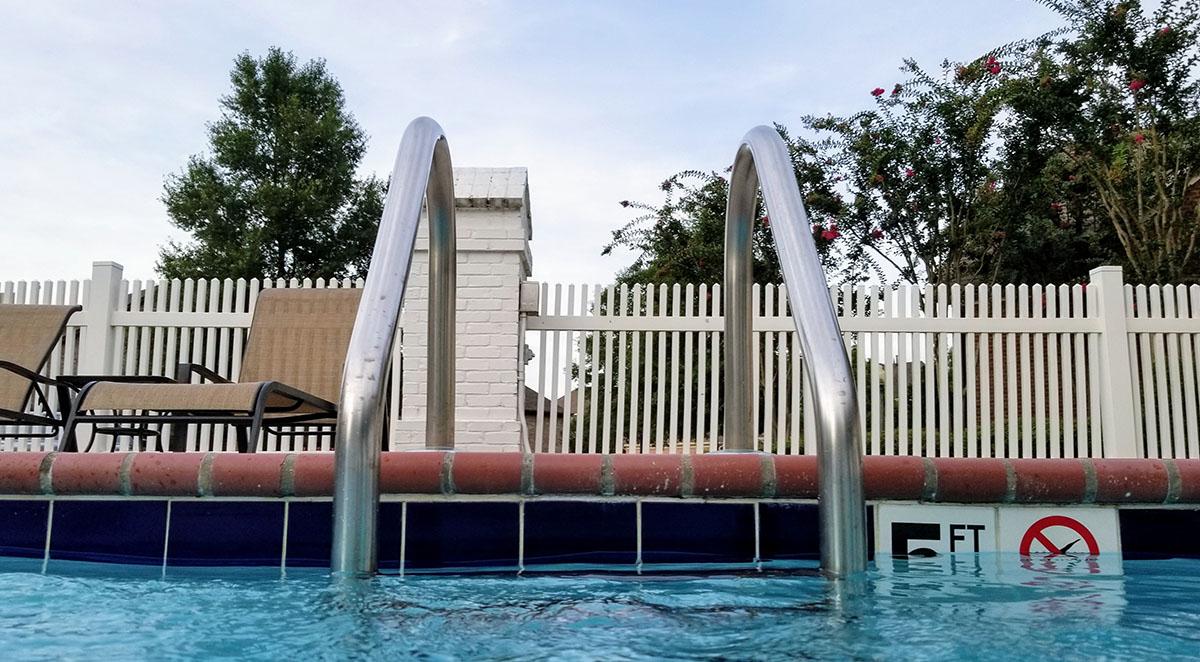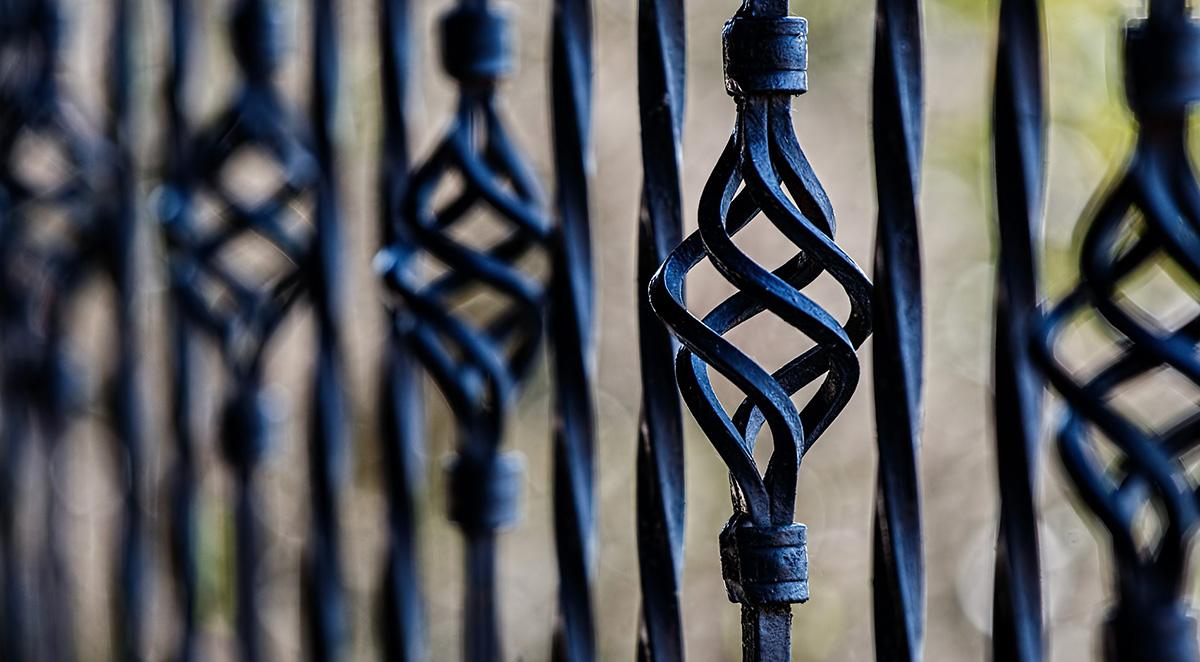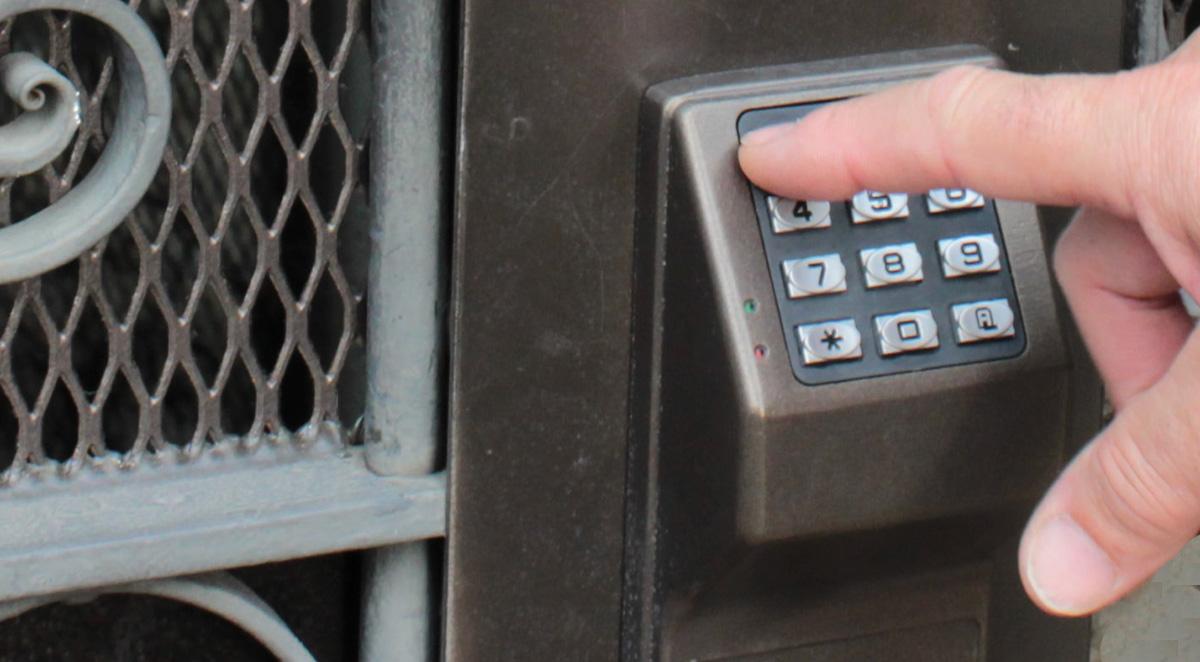
1) General Information About Athletic Fencing
Before you can plan your athletic fence project, there are a few things you need to know about fencing in general. To help you better understand what you need to know, here is a quick primer on fences:
Fence Materials
Here is a general breakdown of fencing materials:
Fencing made of chain link: Despite its utilitarian appearance, a chain link fence may be a cost-effective solution for large athletic areas. Chain link fence material options include galvanized steel or vinyl, making it incredibly durable and easy to maintain.
Fencing made of ornamental aluminum or steel: Fencing constructed of decorative aluminum or steel is visually pleasing, durable, and typically conforms with HOA and municipal requirements.
These fences require very little maintenance, are highly robust, and are hard to scale. Ornamental fencing is the ideal combination of form and function.
Fencing made of PVC/Vinyl: One of the most commonly used construction materials is PVC (polyvinyl chloride), a kind of vinyl.
PVC fencing comes in a range of styles that are comparable to certain wood fence designs but don't require as much maintenance. It will never rot, split, splinter, or deteriorate, and it is insect and moisture resistant. It will never require sanding, sealing, or painting, and it will last a lifetime.
Because vinyl fencing is completely resistant to water, it may be installed near a pool without concern of being soaked by the pool or sprinklers. Many property owners consider this to be the ideal option since it combines form, function, and cost.
Fencing made to be temporary: Temporary fencing is erected temporarily. It is made of free-standing, self-supporting fence panels, held together with couplers that interlock panels together. This makes it portable and flexible.
Chain link, chain link panels, barricades, and temporary driven fences are all options for temporary fencing. It is also possible to add privacy windscreens when utilizing a driven temporary fence.
Fence Regulations
Finding HOA and municipal fence restrictions will be one of the first stages in planning your future athletic fence. Unless you’re building the Field of Dreams out in the middle of nowhere, you'll almost certainly be subjected to certain restrictions.
The following are expected to be included in the regulations:
- The fence's total height.
- The fence's construction material
- The fencing's color
- The fencing's design
While these regulations and restrictions may be inconvenient, they may also help your town or neighborhood retain and protect property values. For those building athletic fencing in codes in the city of Asheville, you can find codes and regulations on this page.
Fence Installation
More than with many types of fences, athletic fencing will be seen by many people. It is likely to be one of the centerpieces in your town, neighborhood, apartment complex, or school.
Furthermore, many people will depend on the strength of the fencing to protect them from flying fastballs and other dangers. Many people will be counting on your athletic fence project to be done well. It is vital to trust professionals to help you plan and install it.
Choosing the location and planning the size of your athletic fence will be as important as picking out the materials. You will want to work with a fence company that has experience and expertise in planning how much fencing you need, where to put it, and how to help you stay within your budget.
Asheville Fence has a substantial amount of experience protecting athletes and spectators with great-looking athletic fences.

2) Choose the Fence Material That Is Best for Your Sport
The type of athletic activity will factor significantly into the material you choose for your athletic fencing. Here is what you need to know about fencing materials and what you need to know to choose the best material for your fencing.
Baseball and Softball Fencing
A fast-moving baseball or softball has the potential to do significant damage to a person or property. It has the potential to shatter windows and cause grave injury to people. Players might also lose their hold on the bat and send it flying into the air.
To protect spectators, a barrier along the side of the field should be about 4 to 6 feet in height, and the backstops must be 25 feet tall.
Bright tubing on the top rail of outfield fencing should allow players to see the top of the fence. The tubing also protects players who crash with the fence by padding the rails. A front railing is usually included, although dugouts can sometimes be entirely enclosed.
Football and Track & Field Fencing
Football is a high-impact, high-intensity activity that will always expose its players to some level of risk. By building a football fence, you should constantly be looking for methods to increase the safety of everyone involved. A jogging track surrounds most football grounds at schools.
Fencing is used to improve spectator experiences, boost safety while playing football, and better confine the ball. The field will require many different types of gates for players, coaches, and spectators to enter the field or bleachers, and the barrier around the track should be at least 4 feet tall.
Tennis Fencing
If you are building tennis courts at your municipal park, neighborhood, or apartment complex, it is important to make sure they are tall enough to prevent tennis balls from flying over. Usually, a 10-foot tall fence will do the trick.
Chain link is often your best bet for tennis courts, but you will want to make sure it is woven tightly enough to prevent tennis balls from becoming lodged in it.
Additionally, you might consider adding mesh to the fencing, and potentially a windscreen, especially here in the mountains.
Pool Fencing
For your neighborhood or community pool, you need fencing material that is tall enough to prevent climbing and sturdy enough to withstand water. PVC/Vinyl fencing is often the most functional option. It is almost impossible to climb and will hold up well against water.
For a slightly more elegant solution, you might choose ornamental aluminum or steel fencing; although, this material may require more maintenance.
As important as the fencing material, you need to make sure you have the right gate and gate operator.

3) How to Choose the Right Gate and Locks
Depending on the purpose of your athletic fencing, you may need a simple gate and lock that will be operated by municipal officials or something that can be accessed by multiple parties. You may need a gate with a lock where people with the code can get in at any time, or a lock with a key or combination.
Talk to your professional fence installation company for more information about gates, gate locks, and gate automation.

4) Why You Should Work With Asheville Fence for Your Athletic Fence
Asheville Fence has the experience and expertise to help ensure your athletic fencing project goes smoothly and meets all your needs. Some of our athletic fence options include:
- Baseball: Outfield, baseline, and backstop fencing
- Softball: outfield, baseline, and backstop fencing
- Batting Cages: Recessed poles, soft toss zones, high visibility, tensioned bottom wires to decrease the risk of falling due to rolling balls or pooling netting, and divider nets
- Football: set-ups for 11-on-11, 7-on-7, flag football, and peewee games.
- Soccer: set up for adult leagues, youth leagues, various AYSO, and tournament
- Futsal: a sport comparable to soccer, including ball-containment netting and fencing.
- Lacrosse: premium fencing, netting, and obstacles
- Swimming: durable and low maintenance pool fencing
- Tennis: tall, durable tennis fencing
Regardless of the sport, Asheville Fence has the material and experience to set up the athletic fence of your choice. Before you begin your project, our team would be happy to help you plan and implement the best option for your sport.
We have installed numerous athletic fences right here in the Asheville area. Contact the team at Asheville Fence for a free estimate for your athletic fence project. Here at Asheville Fence, we want to do our part in keeping our community and employees as safe as possible.
If you are interested in an estimate appointment but would like to not be present, we have made a video describing how you can mark where you would like for us to measure.
Contact us for more information about our fence installation project.

